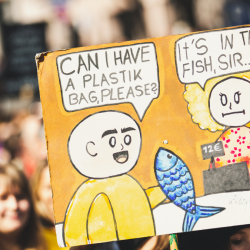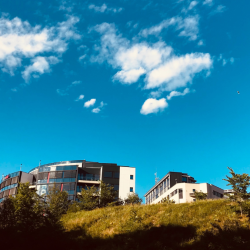Every brand wants to leave a legacy, but with climate change threatening the future of the planet, it’s unclear if any will be able to
As things stand, the greatest legacy any business can leave is a ‘green’ one. While ESG is high on most brands’ agendas, up to this point, eco efforts have mainly focused on the sustainability of office space or supply chains. According to research from Loughborough University, though, the data industry is predicted to account for more carbon emissions than the automotive, aviation and energy sectors combined. Brands, therefore, urgently need to assess and reduce their digital carbon footprint if they want to make the right impression on consumers and the planet.
As the founder of a digital agency, sustainability is top of my agenda, and it’s crucial that I empower my team and clients to also prioritise ‘green’ business practices. Every project offers the possibility to make real progress. Whether this be a design with an energy-saving focus or the opportunity to encourage sustainability within a client’s website. It’s important to recognise the power designers have, to change the course of a brand’s sustainable trajectory.
Designing solutions for a client with a sustainable approach can be challenging without the right knowledge
Sustainable web design often involves taking a more ‘minimalist approach’, but this doesn’t mean it has to be dull. Rather, it’s an opportunity to think outside the box and, most importantly, remember that a ‘green’ website can be everything a non-sustainable website is and more. At Célibataire, we are committed to designing consciously for every project. There is a way around any problem, and in our design process, we blend beauty with sustainability to create a fresh, ‘green’ approach to our work. As designers, we create reality from a vision — it’s in our hands to make sure that the execution of our ideas benefit the planet in every way possible.
One of the key things to consider when it comes to digital decarbonisation is ensuring a website is optimised for a seamless user experience (UX) with reduced load times and offline functionality. Streamlining user journeys will not only significantly reduce a website’s carbon emissions but also improve customer satisfaction and, consequently, conversion rates.
So it pays to go ‘green’, in more ways than one
Research has shown that by implementing sustainable business practices, profit margins expand by an estimated 60%. Not only this, customer loyalty increases, with an enhanced reputation to potential consumers, investors and employers. When you build a network of people that care, your ideas and dedication inspire others, and that’s what people remember — that’s your legacy.
From a digital design perspective, the onus is on us (the designers) to educate brands on how they can reduce the carbon footprint of their website. We need to be able to demonstrate how we can make a website environmentally sustainable while also ensuring it achieves a client’s brand and business goals. By using your ‘green’ credentials and expertise to help brands become more sustainable, you are helping to change their legacy and, in turn, your own.
Featured image: cyano66 / Canva































